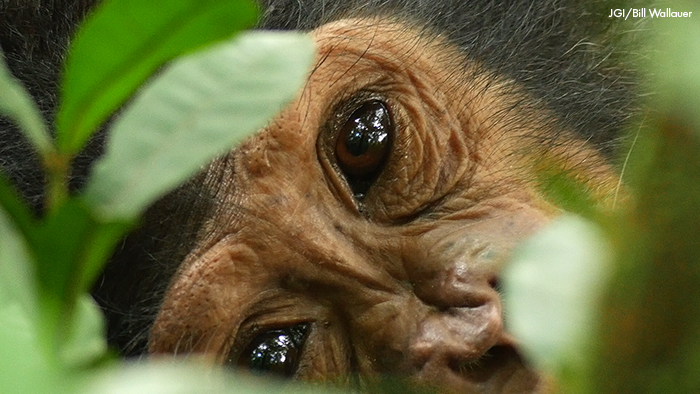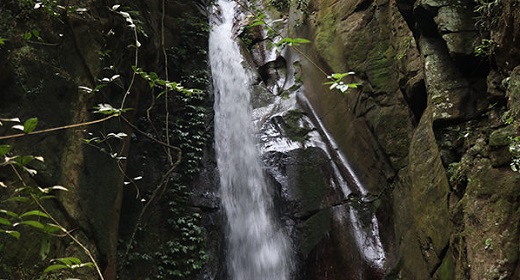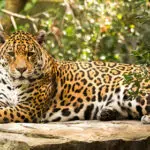by Lana Polito: “Chalchiuhtlicue” meaning, “she of the jade skirt,” was the name given to a water deity by the ancient Aztecs in the 15th century…
The goddess symbolized “the purity and preciousness of spring, river, and lake water that was used to irrigate the fields” (The Met Museum). Human beings have been worshiping nature for centuries – spirituality is indeed something often cited as what differentiates us from other animals. 60 years ago, however, 26-year-old Jane Goodall began to unravel the mysteries of our closest living relatives in the animal kingdom – wild chimpanzees – and discovered that the line dividing us from other animals is not actually so sharp. Research done in Gombe over the last 60 years by the Jane Goodall Institute and others has revealed that in fact chimpanzee communities have individual cultures, and many may even have a sense of spirituality.
How do we know chimpanzees have different cultures?
From Dr. Goodall’s early discoveries and subsequent scientific research, we know that humans and chimpanzees are strikingly similar in both genetics and behavior, but what exactly do we share? Mariam-Webster defines culture as “customary beliefs, social forms, and material traits of a racial, religious, or social group.” Culture is typically thought of as group standardization of practices. Chimpanzees have indeed been observed performing common practices, traditions, and rituals, and the extent of these behaviors varies greatly from place to place. Since Dr. Goodall’s early observations of tool-use, researchers have since observed chimpanzees instructing others on how to make and use different tools, a practice which even differs from community to community.
In 1964, Dr. Goodall shaped an early theory of non-human culture based on her observations. In Cultures in Chimpanzees, Gombe researchers wrote that they have observed 39 different behavioral patterns among chimpanzee groups in across Africa. Some of the different behavioral patterns deal with tool usage, courtship, and grooming. The researchers believe these differences across chimpanzee groups are not due to ecological factors. Furthermore, in a piece by W. C. McGrew, he writes that chimpanzees show “standardization, durability, diffusion, and tradition in both subsistence and non-subsistence activities, as revealed by decades of longitudinal study” (Culture in Nonhuman Primates?).

Do chimpanzees also demonstrate a sense of something beyond the tangible?
One of the most notable ways chimpanzees have demonstrated what could be considered spirituality is through waterfall displays and rain dances. Dr. Goodall observed and wrote about the dances since her earliest days in Gombe. Other researchers, like JGI’s scientific advisor and filmmaker Bill Wallauer, have observed these rituals as well. Many chimpanzees have been observed performing dances by the waterfall, which makes it seem like a collective cultural display. It would, if likened to human behavior, seem like a chimpanzee way of expressing amazement toward a force of nature. Read Bill’s article about his experience here.
Reflecting on her observations of the dance, Jane has said:
“I think chimpanzees are as spiritual as we are, but they can’t analyze it. They don’t talk about it. They can’t describe what they feel. It’s all locked up inside them and the only way they can express it is through this fantastic, rhythmic dance.” A chimpanzee experience of spirituality may then be a potential example of how our ancient common ancestors developed a sense of religion.
In Jane’s piece about chimpanzee souls, she writes:
“Only when our prehistoric ancestors developed a spoken language would it have been possible to discuss such internal feelings — discussions that could create a shared belief system” (Goodall 276).”
Ultimately, as Jane has said, “It is important that science dares to ask questions outside the prison of the bias mind”. Learning about the complexities of non-human primates increases our understanding and respect of other species. It might even influence how we understand our own practices, ideas and cultures. After observing chimpanzees in Gombe for 60 years, not only have we learned more about them as a species, but we have also learned so much more about ourselves.
































































